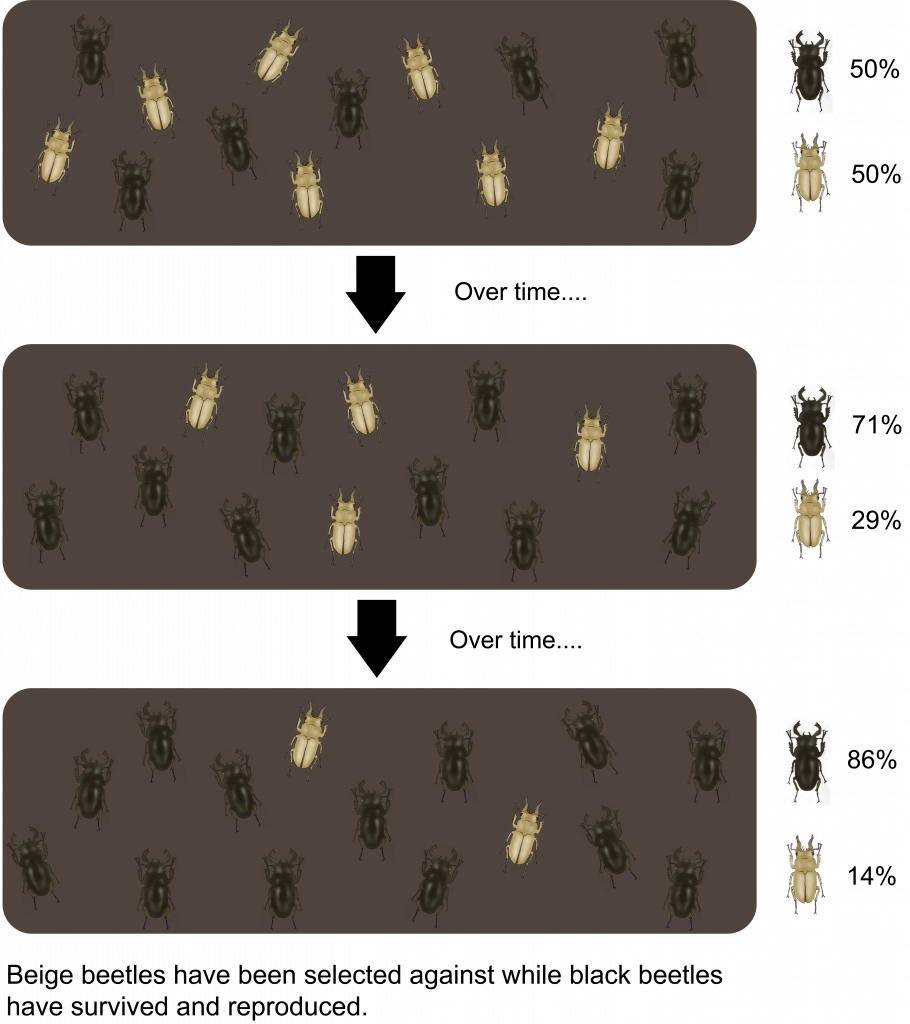2.11 Mechanisms of Evolution: Natural Selection
Natural selection leads to adaptive evolutionary change

Any feature that benefits an individual in its present environment is considered adaptive, and the feature is referred to as an adaptation. Simply, individuals who possess an adaptation are more likely to survive and reproduce than are individuals without the adaptation. If some or all of the adaptation is inherited, we expect individuals with the adaptation to survive and pass the feature to their offspring in greater numbers than those in the population who do not have the adaptation.
Natural selection refers to adaptive evolutionary change or change that occurs when heritable adaptations confer a survival and reproductive benefit that, in turn, changes the genetic makeup of a population. Natural selection can change populations, species, and whole groups of organisms.
If you consider the speed at which some populations can grow, and the fact that resources are limited, it should be clear that there must be some culling mechanism working to limit population sizes. This mechanism is natural selection: individuals who inherit adaptations simply out-compete (by out-surviving and out-reproducing) individuals that do not possess the adaptations. Evolutionary “winners” are those individuals that survive to reproduce and pass on adaptations to their offspring.
Consider the following questions
-
- Give an example of evolution by gene flow.
- What is the relationship between adaptation and natural selection?
- What are some examples of adaptations?
- What is the relationship between natural selection and evolution?
- How might you determine whether a certain individual is an evolutionary “winner”?

